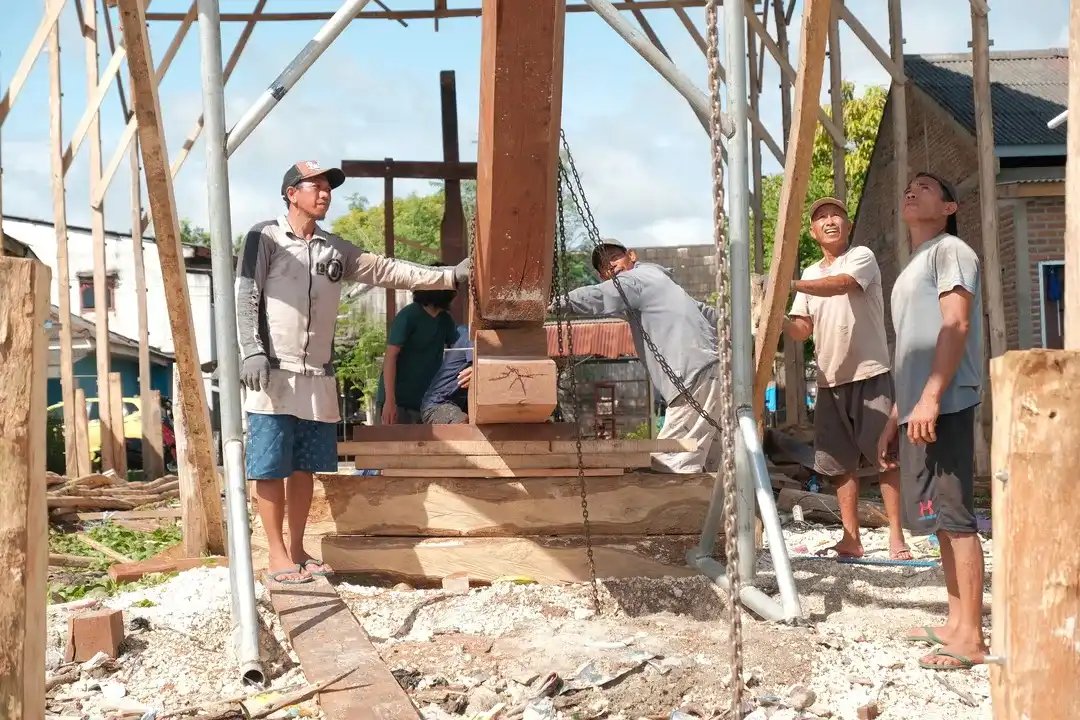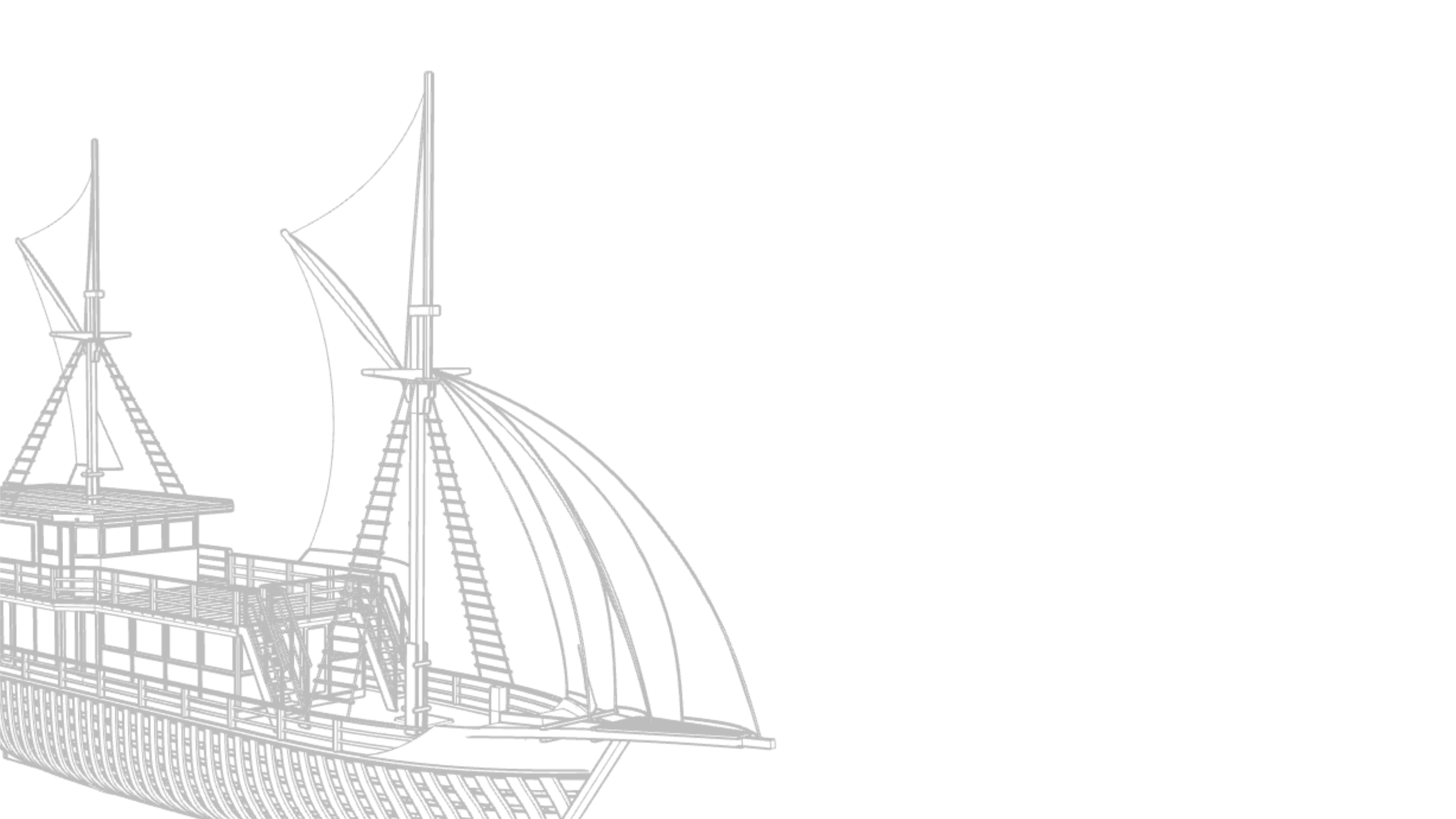11 Essential Boat Building Tools and Materials from Tradition to Today

Using the right boat building tools and materials is essential to preserving traditional craftsmanship and seaworthy design. This guide explores the manual tools, natural timbers, and ritual-rich practices that bring handcrafted vessels to life.
We'll delve into old and new techniques—examining tools, materials, modern alternatives, and where Voyagers can see them in action. Let’s start with the tools that shape wooden boats from keel to curve.
Read Also: Anatomy of a Phinisi Ship: Inside Indonesia’s Iconic Wooden Vessel
What Tools Are Used in Boat Building?
Traditional boatbuilders rely on time-tested hand tools, each designed for a specific purpose in crafting seaworthy vessels. These tools are not just functional—they carry tradition, precision, and generations of mastery.
1. Adzes & Axes
Adzes and axes are fundamental for shaping the massive timbers that form a boat’s hull and keel. The adze, with its curved blade, is swung downward to carve long, shallow scoops, creating smooth curves. Axes, meanwhile, are used for rough shaping and splitting logs before finer work begins. Both require skill and control to achieve symmetry and structural balance.
Different types of adzes exist, such as the straight and crooked adze, each suited to particular wood curvatures or grain directions. Traditionally, these tools were hand-forged and often personalized by boatwrights for optimal handling.
2. Chisels & Gouges
Used for detailed carving, joining, and smoothing, chisels and gouges help refine frames, decks, and joints.
Gouges allow curved indentations, while flat chisels sharpen the fit of mortise-and-tenon connections or trim edges.
They are essential for finishing touches and fine craftsmanship, especially in decorative boatbuilding like Phinisi construction.
3. Hand Drills & Awls
Before power tools, hand drills and awls were used to bore precise holes into thick timber for dowels, lashings, or pegs. These tools offer greater control, especially in delicate areas, and prevent over-penetration or cracking. Traditional hand drills include the brace and bit system, which permits greater torque for larger holes while maintaining control.
Awls are also used to pre-mark or score timber prior to carving or drilling. Awls come in various forms such as scratch awls for scribing lines and gimlets for starting holes, vital in maintaining timber integrity. These tools also allow craftsmen to work quietly without disturbing sensitive environments.
4. Saws & Planes
Traditional saws are essential for cutting planks and beams to size, whether crosscutting or ripping lengthwise.
Planes and spokeshaves follow, shaving down surfaces for smoothness and curvature. These tools help shape the flowing lines of the hull, enabling better hydrodynamics and aesthetics.
5. Plumb Bobs & Dividers
A plumb bob is a weight suspended on a string to determine vertical alignment—crucial when erecting the boat’s frame. Plumb bobs can be crafted from brass, steel, or lead with varying weights suited to different measurement needs.
Dividers are used to measure and replicate curves or distances. Both tools are key to ensuring symmetry and balance across the boat’s structure, which affects stability on water.
6. Squares & Levels
Builders use try squares, combination squares, and spirit levels to make sure joints and angles are true.
These tools guide right angles in frames and decks and ensure the keel, ribs, and planks sit flush. Even in intuitive boatbuilding, visual precision is tested and verified with these simple yet vital tools.
7. Clamps (F‑Clamps, Hand Screws)
During construction, clamps hold parts together while adhesives set or joints are fitted.
F-clamps and traditional hand screws allow pressure to be evenly distributed across joints, especially during deck installations or plank laminations.
Their use minimizes gaps and ensures tight, secure bonding.
8. Mallets & Hammers
Mallets, often made of hardwood, are used to strike chisels or gently coax timber into place without damaging it.
Hammers may be used when nails or iron fittings are required. Traditional builders choose the right striking tool for each task to preserve wood integrity and structural strength.
9. Caulking Irons & Cotton/Oakum
To waterproof wooden boats, builders use caulking irons to wedge cotton or oakum into seams between planks.
This ancient method, followed by sealing with pitch or resin, ensures watertight joints and extends the boat’s lifespan. It’s a labor-intensive but crucial part of the process.
10. Sharpening Stones & Honing Guides
Blunt tools make poor cuts. Sharpening stones and honing guides help craftsmen maintain razor-sharp edges on chisels, adzes, and planes. Regular sharpening is part of the daily routine, preserving both tool life and the precision needed for high-quality construction.
Sharpening stones range from coarse to fine grits and include materials like oil stones, water stones, and diamond stones, each providing different finishing qualities. Honing guides maintain the correct bevel angle, preventing tool damage and uneven edges. Consistent sharpening enhances safety and work efficiency.
11. Strops & Files
Strops (leather strips) are used for final polishing and edge refinement, especially on carving tools. Files help remove small burrs or imperfections on wood and metal parts. Together, they support fine finishing work—essential for both function and appearance.
Strops are often treated with abrasive compounds like chromium oxide to increase their polishing ability. Files come in various shapes (flat, round, half-round) and tooth sizes to suit diverse refinement needs. Proper maintenance of these tools prolongs sharpness and ensures superior craftsmanship.
Read Also: How Wooden Boats Are Made in Indonesia: A Step-by-Step Look at a Living Tradition
What Materials Are Used in Boat Building?
The materials chosen by traditional Indonesian boatbuilders are more than just structural—they reflect deep ecological knowledge, local availability, and centuries of refinement. These builders work with natural resources that offer strength, resistance, and cultural meaning.
1. Timbers (Ironwood, Teak, Bitti)
Traditional boats begin with carefully selected hardwoods.
- Ironwood (Kayu Besi) is extremely dense and rot-resistant, ideal for keels and hulls that stay submerged for long periods.
- Teak (Jati) is rich in natural oils that protect against moisture and pests—commonly used in decks and interiors.
- Bitti Wood, native to South Sulawesi, is lighter but still strong, making it perfect for upper structures and framing.
Each wood is selected for a balance of strength, flexibility, and tradition.
2. Natural Resins & Oils
Waterproofing in traditional boats often comes from natural sealants. Builders apply tree resins, like damar or resin from local pine species, to fill and coat seams.
These are sometimes mixed with natural oils (e.g., coconut or linseed oil) to increase water resistance and flexibility, especially around joints and curved hulls.
This eco-friendly method reduces the need for synthetic chemicals and preserves wood naturally.
3. Natural Fibers (Cotton, Coconut Rope)
Rigging, lashings, and fastenings often rely on natural fiber ropes made from coconut husk or woven cotton.
- These ropes are strong, biodegradable, and easy to replace.
- Used to secure masts, sails, beams, and deck fittings—especially on boats built without nails.
Some regions also use rattan or bamboo strips for added flexibility and strength in lashing.
4. Other Core Materials
Depending on the region, boatbuilders incorporate additional natural or handmade components:
- Local wood planks are milled or hand-shaped for hulls and decks.
- Bamboo trim may be used for detailing, support structures, or internal framing.
- Traditional paints and pigments, often derived from minerals or plants, decorate and protect the boat while honoring cultural symbolism.
These materials aren't just chosen for practicality—they’re selected with respect for the environment, available resources, and maritime customs that have lasted generations.
Modern vs Traditional Tools & Materials
While modern boatbuilding benefits from efficiency and convenience, traditional builders in Indonesia continue to rely on tools and materials that carry cultural depth.
Here’s a quick comparison that shows how heritage and innovation meet—without losing the soul of the craft.
| Modern Tools & Materials | Traditional Counterparts |
| Power drills, circular saws | Hand drills, manual saws, spokeshaves |
| Epoxy and synthetic sealants | Natural resin, oils, cotton/oakum |
| Factory-timber or composites | Ironwood, teak, bitti from local forests |
Modern tools can speed up work, but traditional builders often prefer hand tools and local timbers—they preserve authenticity, retain craftsmanship quality, and honor cultural heritage.
Read Also: How Indonesia’s Traditional Boat Builders Are Preserving Culture
Experience Traditional Boatbuilding Tools Up Close at Riara Marine
Voyagers can witness boatbuilding tools and techniques firsthand in cultural context at Riara Marine’s in Bulukumba. You will learn about:
- Watch master builders at work with traditional tools
- Learn about wood selection, carving, and tool maintenance
- Experience cultural rituals tied to each phase of construction
Boat building tools and materials are not just hardware—they’re living links to heritage. If you're ready to move beyond observation, join Voyagers who roll up their sleeves at Riara Marine’s Workshop Tour. Use real tools, touch the wood, craft tradition, and sail with history.



